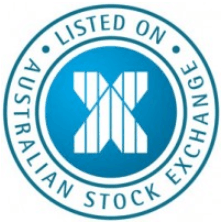
After all the drama and heightened concern of late that we could be heading directly towards an emerging market collapse, we’ve seen much more sanguine trading today and calmer heads have prevailed.
There haven’t been any discerning trends from clients on our out-of-hours European markets, while we’ve actually seen reasonable buying of Japanese and Hong Kong indices. The stabilisation seen in emerging market currencies is having a positive effect on sentiment in the equity market and while retail traders will rarely look at the CDS (credit default swaps) market, it’s interesting to see that corporate CDS spreads are starting to turn lower (a sign of confidence returning). It’s become apparent that HSBC CDS have become somewhat of a canary in the coal mine.
If you have acted on the spike in HSBC’s CDS on January 7, you could have acted fairly aggressively and sold the S&P 500 or ASX 200 and profited from the subsequent move lower. Credit markets generally lead equities, so if we start seeing the HSBC CDS fall then this could put a bid into developed markets.
Still, the question many in the market are asking is whether the moves in emerging markets were caused by developed market central bank policy, or have the recent negative moves in developed markets been a by-product of the recent EM rout?
Better days for the Turkish Lira
Either way, things seem calmer today and we’ve even seen good buying of Turkish Lira (TRY). This is clearly in anticipation of the upcoming emergency meeting (09:00 AEDT) and the prospect that we could see a strong move higher in its interest rates.
Some have touted capital controls, however when the economy has a current account deficit at 6.2% of GDP, this seems fairly strange given they rely quite heavily on foreign inflows to fund the deficit. How long the calm can last has been in question and clearly the Turkish central bank is going to have to be more creative than simply raising rates by 25 basis points and you would think 100bp+ are more likely.
US futures initially did not take too kindly to the Apple earnings, although the days of ‘as goes Apple, as goes the S&P’ are long gone. The numbers themselves were strong; however the 6.6% miss to Q2 guidance was easily the standout and the reason why the stock closed at $505.90 in after-hours trade (down roughly 8%).
Those who didn’t close out in the post-market will be hoping the market looks through this lower Q2 revenue and supports the stock at $500. Still, looking a little wider afield it has to be said that aggregate S&P earnings are actually really strong now and earnings can’t be the fodder for the bears any longer. With over a quarter of firms having reported, and 72.8% having beaten on the EPS line, with 10.4% aggregate growth and 68% having beaten the street on revenue, earnings are clearly not the problem. Yahoo and Pfizer take centre focus today.
While US futures are , you would have to think that they would be lower if we hadn’t seen stability in emerging markets and some positive signs in Asian indices. China is modestly higher, which is testament to the calming of nerves as ICBC have detailed they will pay out the principal on the soon-to-mature investment trust. Investors will, however, lose any interest they were expecting on maturity. The Hang Seng is flat, while the Nikkei is finding support from the unwinding of the carry trade (another recent macro concern).
ASX falling, but well off the lows
The ASX 200 has found some solace in the moves offshore and has picked up from the low of 5158, after the cash market caught up to moves in the SPI futures. Certainly the pick-up in the NAB business confidence and sentiment was noted and will disappoint those calling for near-term rate cuts. The conditions survey has finally swung into positive territory, being the biggest monthly increase since 2011, while the employment sub-component halved. AUD/NZD longs are looking more compelling from a tactical standpoint, especially given the swaps market are pricing in a 50/50 outcome for the RBNZ to hike rates this week. My feeling is they will hike in March, so we could see a spike in the pair if they hold off. However, if the market feels the 125bp of hikes priced in over the next twelve months are justified then we could see the pair reverse course fairly rapidly.
European markets should see a flat open, although with the number of corporate reportings (including Siemens and Philips in Europe) there is plenty to focus on. We also get the advance read on UK Q4 GDP, with the annualised rate expected to increase to 2.8%. In the US we also get durable goods and consumer confidence data.